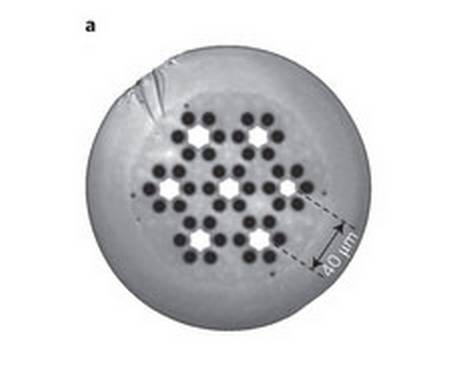|
A new type of fibre optic cable developed by researchers in the US and Netherlands has smashed data transfer records, managing to squeeze 255 terabits of information per second down a single strand of glass fibre.
This means that a single fibre optical cable made using this technology could carry as much data as the entire internet at peak times. To achieve this feat engineers from Eindhoven University of Technology and the University of Central Florida created a multi-core strand of glass fibre; a development that they say is tantamount to letting “three cars […] drive on top of each other in the same lane”. Normal fibre optic cables contain thousands of strands of glass fibre, each strand a little thicker than human hair. These transfer information by bouncing beams of light through the glass - imagine sending a message using morse code by flashing a torch on and off. By managing to scale down these glass fibres, cramming seven cores into a single glass strand, this new technology has achieved transfer speeds of 32 terabytes a second (a byte is eight times as big as a bit) or enough to shift 1,000 gigabytes in 31 milliseconds. This is faster than the total capacity of all the fibre optic cables currently buried under the Atlantic Ocean, but unfortunately it will most likely be decades before these speeds are useful to commercial customers – after all, those undersea cables won’t replace themselves. A cross section of the new multi-core cable showing the pathways arranged in a hexagon pattern. The findings can be read in the journal Nature Photonics Independent UK James Vincent
0 Comments
Leave a Reply. |
AuthorI have been in the field of fiber optics since early 1990s. I gained fiber optics skills and knowledge via my working experience as end-user, main contractor and sub-contractor and finally as an optical fiber enterpreneur. Archives
January 2017
Categories
All
|

 RSS Feed
RSS Feed